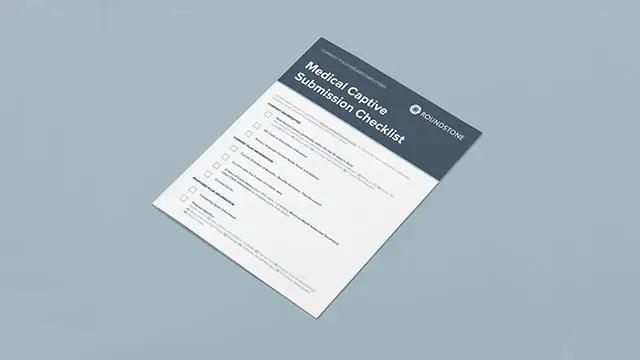This blog post is based on the presentation The Benefits of Good Benefits: How Self-Funding Impacts Employee Satisfaction, an HR perspective on self-funding from the 2023 Medical Captive Forum. Our thanks to presenters Jim Fox, Head of Human Resources at Family Resource Center, and Meg Mayhugh, Founder and Managing Partner at People Architects, for sharing their experiences.
Highlights
- Understanding the link between self-funding health insurance and employee satisfaction is essential for small to midsize companies looking to attract and retain their workforce.
- Self-funded insurance lets businesses customize their health insurance plan to meet the specific needs of their employees for better, more affordable coverage.
- Lower costs and better care mean improved well-being, which can boost employee engagement, performance, and retention, leading to a happier, more fulfilling work environment.
- Self-funded insurance in a group captive allows smaller companies to benefit from a self-funded plan with greater flexibility, transparency, and control.
For small and midsize businesses (SMBs), health insurance and employee satisfaction go hand-in-hand. Offering your employees a low-cost, high-quality health insurance plan can help you attract and retain talent and create a healthier, more engaged work environment.
As an alternative to fully insured plans, self-funded health insurance can provide a more customizable, cost-effective way to improve coverage and employee contentment at your organization.
Understanding the connection between self-funding and employee satisfaction can help you build a healthcare plan that allows for better access to services at a more affordable cost. Self-funding is critical to this goal because it provides an affordable way to offer great benefits at a sustainable level.
How are Self-Funding and Employee Satisfaction Connected?
Employee satisfaction is vital in the workplace. According to a recent Gallup survey, nearly 6 in 10 employees are engaged in “quiet quitting,” costing the global economy $8.8 trillion when combined with actively disengaged workers. The same survey found that 85% of employees said changing the engagement or culture of their workplace, pay and benefits, or well-being would boost their work satisfaction.
Switching to self-funding empowers employers to address many of these concerns to improve employee contentment. Through self-funded group medical captive insurance, your SMB can access the benefits of self-funding, such as greater flexibility and customization and lower premiums, to boost employee well-being, offer better benefits, keep employee contributions low, and improve workplace engagement and culture.
“It’s really cool to be able to stand in front of employees and say, your deductibles are staying the same, your premiums are staying the same.” – Jim Fox, Head of Human Resources at Family Resource Center of Northeast Ohio
Greater Flexibility and Customization
The flexibility and customization that comes with self-funding contributes to employee satisfaction. With a self-funded plan, you can offer your employees multiple options and tailor benefits to their individual needs. The design-your-own approach gives employees a sense of empowerment and control regarding their health and well-being.
Here are examples of customizations you can build into your plan:
- Flexible spending accounts. You can build in FSAs to help employees manage healthcare expenses.
- Additional coverage options. You can include coverage for specific conditions like maternity care or dental procedures.
- Strategies for the medications your employees use. You can design a better strategy for prescription drug coverage to make sure employees get what they need at a fair price.
- Digital therapy options. You can bring in teletherapy options for greater accessibility to treat common conditions such as mental health and musculoskeletal issues.
This flexibility enables employees to address their unique health concerns and life circumstances, leading to higher satisfaction and a stronger connection with your organization. Satisfied employees tend to be more productive, improving your bottom line and empowering your business to achieve its goals.
“I had a lot more flexibility to customize the plans that would actually best work for our employee base so that we were paying for what they wanted, not just what was offered,” says Meg Mayhugh, Founder and Managing Partner at People Architect.
Personalized Claims Support
Self-funded health insurance plans often come with personalized claims support, meaning employees have dedicated assistance when navigating the claims process. This includes having an experienced, customer-focused Third Party Administrator (TPA) that helps resolve issues and answer questions promptly. They handle the heavy lifting of your self-insured benefits, so there’s less burden placed on HR.
“You don’t have to work through it alone,” says Jim. “You have advisors, you have financial folks who have been there and done that, and they can help you figure out the best way to allocate funds.”
Using a TPA to provide personalized support and help your HR team onboard new employees can help plan members feel more supported and less overwhelmed than they might feel on a fully insured plan. It can also result in a smoother claims experience and higher satisfaction with the benefits program.
Consistent Coverage Levels and Premiums
From your employees’ point of view, there’s little difference between a self-funded plan and a traditional plan. They still get the same great care, same access to providers, hospitals and pharmacy but at a lower cost and with better service.
One of the best advantages to self-funding for employee satisfaction is the cost. According to the most recent Kaiser Family Foundation survey, the average annual premium in 2022 for single coverage was $7,911, while the family average was $22,463. This is a 20% increase in the last six years and 43% since 2012. American families cannot continue to sustain such costs. And that puts small to midsize businesses in a difficult and awkward bind.
Companies that self-fund in a group captive save money over the long term. Even in a year with unexpectedly high claims, the captive acts as a buffer. It’s possible for an employer to get money back from unspent premium in the captive pool.
“We saved $525,000 the first year,” states Jim, talking about the self-funding experience for Family Resource Center.
Celebrating its 20th anniversary in April, Roundstone has returned $72 million to captive participants since the captive’s inception. Roundstone is purpose-driven, aligning with the interests of the employers, and returning any underwriting profits back to them, instead of pocketing them.
This lets you reinvest the funds however you like — potentially implementing better, more tailored healthcare solutions for employees to boost satisfaction, and keeping employee cost share low. Roundstone, for example, has not increased employee contributions for 8 years running.
Read our case study to learn how we do it.

Enhanced Transparency and Communication
Self-funded health insurance plans prioritize transparency and effective communication to keep employees informed about their benefits. This may include regular updates on plan changes, educational materials explaining coverage details, and accessible resources for employees to learn about their options.
As an employer, you can access your company’s claims data through real-time dashboards. You can use this to make changes to your coverage based on benchmark comparisons and highlight to employees how their engagement and utilization affect their out-of-pocket costs. All data is anonymous and fully HIPAA compliant.
According to Jim Fox, “There may be concerns and uncertainties, but by providing clear information and demonstrating the potential savings and advantages, we can help alleviate those worries and keep everyone focused on the long-term benefits.”
Promoting transparency and open communication makes employees feel more engaged and empowered to make decisions about their healthcare, leading to higher satisfaction.
Better Access to Healthcare Services
“Self-insurance is very much like moving from a rental property to owning a property.” – Jim Fox
Self-funding helps you provide employees with better access to healthcare services, resulting in increased happiness. With a self-funded plan, you gain the freedom to choose preferred providers and offer services based on quality and cost-effectiveness.
For instance, the flexibility of self-funding allows you to build these options into your plan:
- Coverage from a Center of Excellence to offer specialized care so your employees receive top-quality care from renowned providers.
- Concierge services, which make it easier for your workers to find high-quality care at affordable rates.
- Direct primary care programs to incentivize employees to get routine care that can head off more costly treatment later.
- Telemedicine services, which allow employees to access convenient and cost-effective medical care remotely without taking time off or driving to and from appointments.
- Clinical care management to manage the costs of chronic disease.
- Behavioral health coverage to address mental health needs.
Incentives and Well-Being Programs
With a self-funded plan, you can provide better access to well-being programs and incentives for employees. These programs can include discounted gym memberships, smoking cessation programs, and nutritional education resources for improved health.
With a self-funded health plan, you have the flexibility to offer incentives for achieving health goals or participating in well-being programs. For example, employees can receive lower co-pays for low-cost services or earn gift cards for completing surveys related to their well-being or participating in biometric screenings.
Implementing well-being programs and offering incentives helps you promote a healthier work environment, empower employees to prioritize their well-being, and contribute to higher satisfaction and better health. Wellness becomes integral to your culture.

Boost Employee Satisfaction with a Self-Funded Plan From Roundstone
“If you have a high satisfaction benefits plan, especially relative to the health benefits, your retention rate doubles, and we all know what that means.” – Jasmine Bibb, Director Customer Experience, Roundstone
Understanding the impact of self-funding on employee satisfaction is crucial for business leaders who want to create a thriving work environment. Taking advantage of the benefits of self-funding, such as open communication, flexibility, and innovative cost containment and digital technology solutions, can help your organization foster a sense of ownership and empowerment among employees, leading to higher job satisfaction.
To maximize employee satisfaction and see boosted cost savings, explore self-funded group captive insurance with Roundstone. Speak with one of our advisors today to discover how self-funded group captive insurance can boost employee satisfaction and help you save thousands on health insurance costs year over year.













